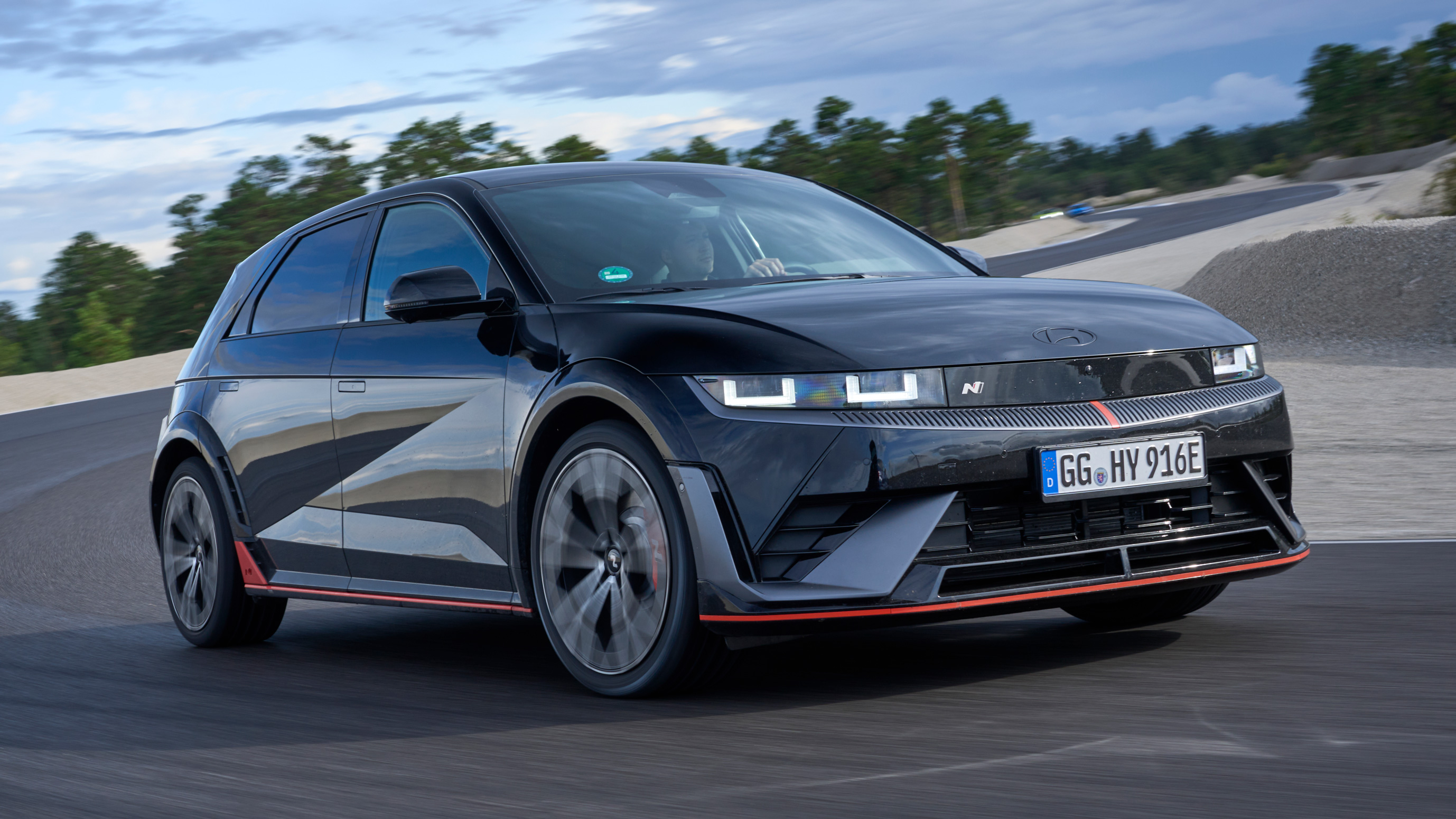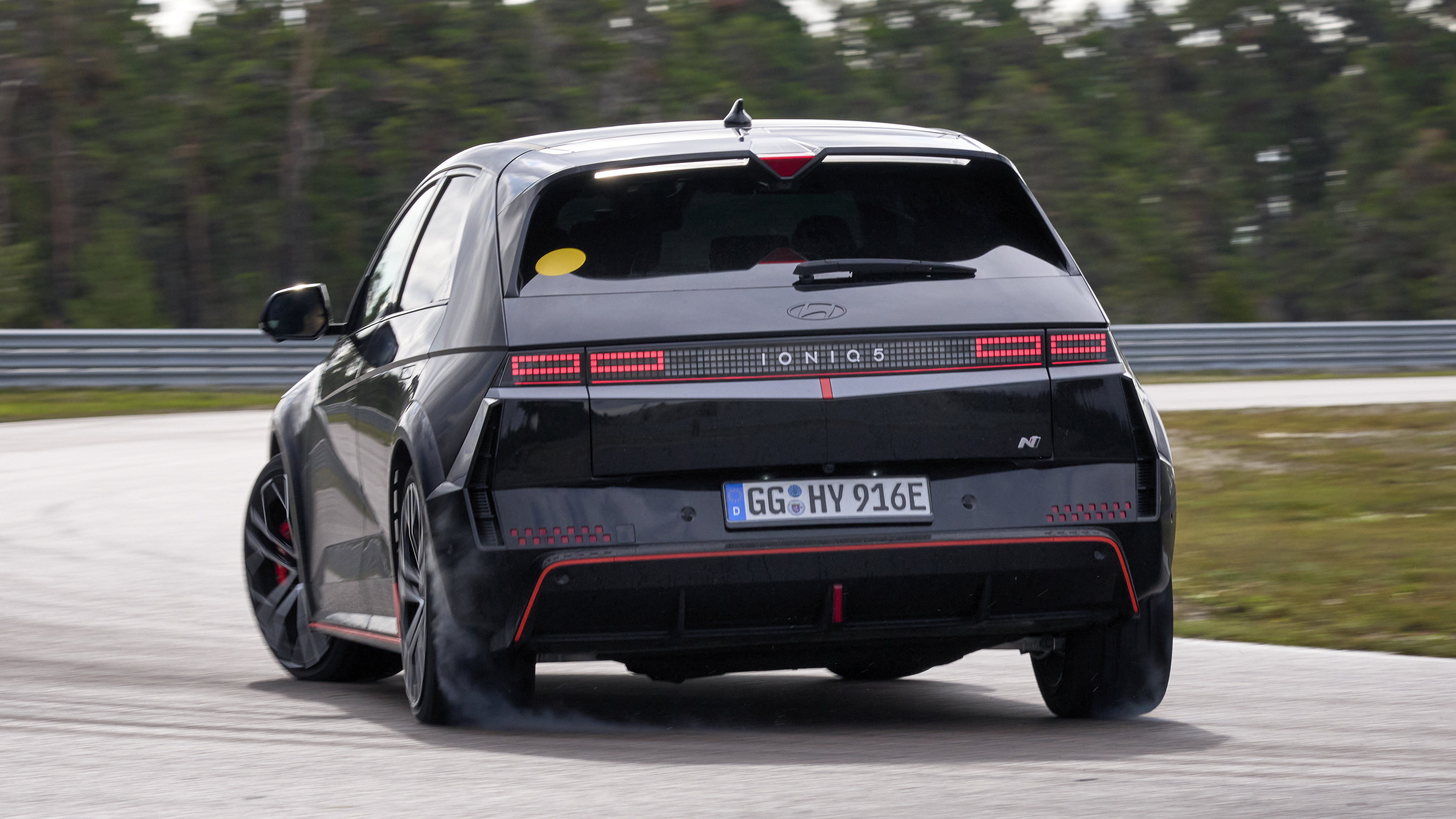
Hyundai Ioniq 5 N review: mind-blowing and heartening in equal measure
£64,945 when new
SPEC HIGHLIGHTS
- Range
(Combined)257 miles
- Battery
Capacity84kWh
- BHP
641bhp
- 0-62
3.4s
- CO2
0g/km
- Max Speed
160Mph
What do we have here?
Hyundai N division’s take on the ridiculously good-looking Ioniq 5. A hatchback-shaped, medium crossover-sized, four-wheel drive EV, likely to cost between £65k and £70k and based on the same bits as the Kia EV6… with 600bhp. In fact, hit the embarrassingly named N Grin Boost mode button on the steering wheel and you have 641bhp for 10-second bursts.
So… a hot hatch?
More of a hyper-hatch really… but let’s put supercar power figures to one side and think about what the Ioniq 5 N represents. The hot hatch as we know it is on life support – it’s unlikely we’ll ever see another Fiesta ST or Focus RS, Renaultsport has evaporated, VW has lost its mojo. We still have the Honda Civic Type R of course, although that’s now a £50k car. Is the time right to reset completely what we think a hot hatch is?
Hyundai says yes, and presents this e-hatch, with more computing wizardry than the Mars Rover, as its proposal for what comes next.
Let’s talk numbers…
There’s a launch control function that unlocks 0-62mph in 3.4 seconds – that’s Ferrari 458 acceleration - and a drag race with the new Civic Type R (we didn’t have a Ferrari 458 to hand that day) that looked like a greyhound racing a guinea pig, confirmed it. The top speed is 167mph.
What makes it unique, then?
Hyundai has thrown the kitchen sink at the electronics to make it not just rapid, but engaging to drive in new and interesting ways we hadn’t previously thought possible. You can dive into the menus and make it sound like a zingy combustion engine, or a fighter jet, or a lightsaber. Weirdly, it’s the fake petrol engine sounds that work the best, largely because of another mode – N e-Shift.
This is a fully simulated eight-speed paddle shift gearbox that does everything a real one does – like manage the torque so you feel acceleration build as you rev towards the imaginary 8,000rpm redline. It will bounce off the limiter if you forget to pull the paddle, interrupt the torque with a little kick on upshifts and a little blip on the way down, the sound instantly reflects throttle position, revs and what ‘gear’ you’re in.
It all sounds horribly artificial on paper, but the shocker is… it works brilliantly and feels natural to the point you forget you’re interacting with software, not explosions and cogs. My highest praise? For a fast lap at the Gotlandring, our venue for Speed Week 2023, it was more fun to leave the e-Shift on.
Electronic trickery aside, how does it drive?
Firstly, I’m obliged to tell you this is a pre-production car… but that’s where the caveats end because every mode, switch and function worked perfectly and despite our best efforts it refused to break. And secondly, I’m not sure you can separate electronic trickery from the driving equation with this car. It defines the whole experience.
OK, this is a 2.1-tonne crossover and you feel it in fast direction changes, and by the pasting the tyres take during just a few enthusiastic laps. The steering is a little light and remote from the front tyres… but it controls its mass brilliantly, feels lighter than it should and reacts instantly and vigorously to your throttle inputs – 600bhp and 545lb ft of torque tend to do that. However, the real fun comes from taking the time to understand all the driving modes on offer, then having a thorough play.
Top Gear
Newsletter
Thank you for subscribing to our newsletter. Look out for your regular round-up of news, reviews and offers in your inbox.
Get all the latest news, reviews and exclusives, direct to your inbox.
Driving modes of note?
There’s an N Drift Optimiser mode that sends all the torque to the rear axle and retains only the lightest electronic touch to allow big angles but limit excursions into the gravel – although you can’t use the simulated gearshifts at the same time, which is annoying. Alternatively, you can set your preferred torque split on a slider; from 100 per cent rear, to 100 per cent front-wheel drive, and turn everything off.
Then there’s torque kick drift, a fake clutch kick function that cuts power when you hold both paddles on throttle, then dumps it all on the rear tyres when you release them to fling you sideways at the precise moment you choose.
I hope owners take the time to explore all this stuff in a safe environment (no, a supermarket car park doesn’t count) because it really does add layers of interactivity beyond the bare sledgehammer performance. It requires patience to learn and skill to perfect, and there’s huge satisfaction to be had controlling this big EV and making it dance around leaving plumes of smoke behind it on track.
We’re yet to drive it properly on road, but the ride doesn’t appear overly harsh and there’s nothing stopping you switching everything to comfort, loading the kids, bags and dog in the back and whirring around in the same cocooned silence as the standard Ioniq 5.
You sure these driving modes aren’t… gimmicks?
Granted, it's a lot to take in and figure out, but can we call them gimmicks? I say no, gimmicks are useless, and these are all properly engineered ideas that genuinely add to the fun, interaction and the longevity of your love for driving this car. Yes, it’s a two-tonne heffer that’s heavy on its tyres and brakes and doesn’t change direction or have the steering feel of a 205 GTI, but 600bhp and torque vectoring wizardry go a long way towards masking the mass.
As a window into what could be possible with electric performance cars in the future, it’s mind-blowing and heartening in equal measure.
Featured







